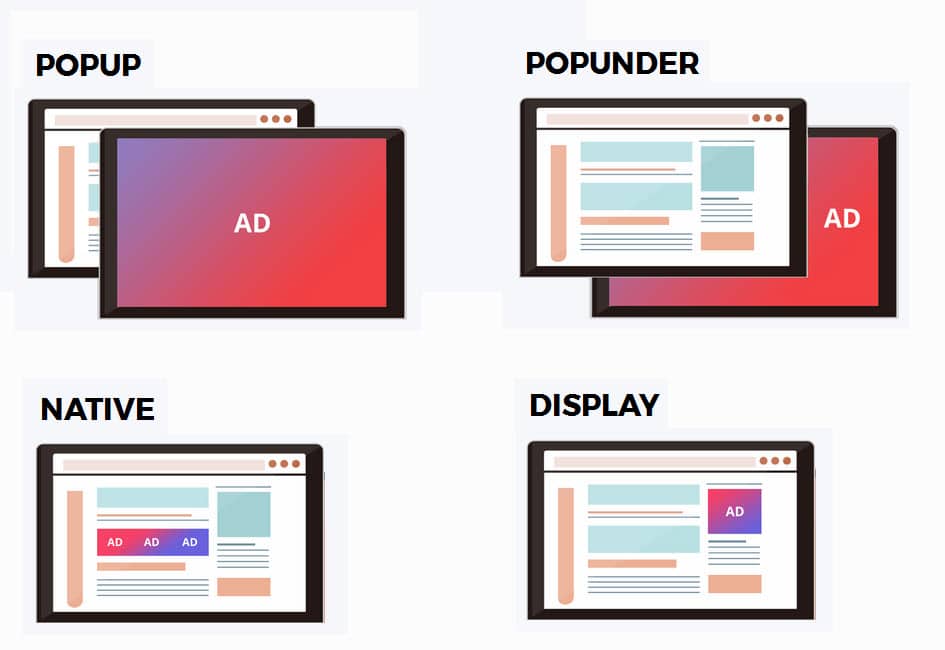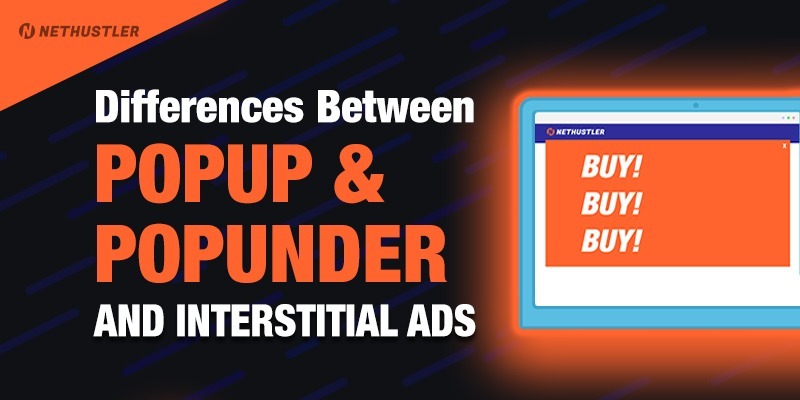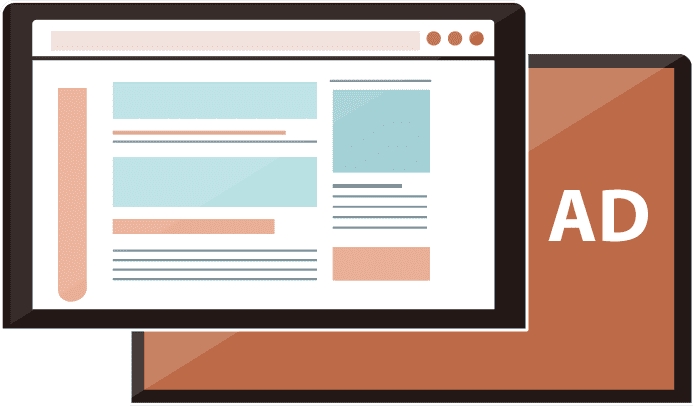The advantages and disadvantages of utilizing popunder advertisements in internet advertising
Buy CPC Traffic | Buy Display Ads | Exclusive traffic sources | Buy Push Ads | Popunder ADS | Buy Native Ads | Buy Preroll Ads

Buy CPC Traffic | Buy Display Ads | Exclusive traffic sources | Buy Push Ads | Popunder ADS | Buy Native Ads | Buy Preroll Ads
Popunder ads have become a popular form of online advertising in recent years. These ads are designed to open a new browser window or tab behind the current one, making it less intrusive to users. While popunder ads have the potential to reach a large audience and increase brand exposure, they also come with their fair share of pros and cons.
One of the main advantages of using popunder ads is their ability to capture the attention of users who may have become immune to traditional banner ads. The unexpected nature of a popunder ad can engage users and increase the likelihood of them interacting with the ad content. Additionally, popunder ads often have higher viewability rates compared to other forms of advertising, as they are less likely to be blocked by ad blockers.
Furthermore, popunder ads can be an effective way to reach a specific target audience. These ads can be targeted based on factors such as geographic location, demographics, and browsing behavior, allowing advertisers to tailor their campaign to a specific group of users. This level of targeting can help improve the relevancy of the ads and increase the likelihood of users taking action.
On the flip side, popunder ads can be perceived as intrusive and annoying by some users. The sudden appearance of a new browser window or tab can disrupt the user experience and lead to a negative brand impression. This can be particularly problematic if the ad content is irrelevant or of poor quality. Additionally, popunder ads may not always be effective in terms of click-through rates, as users can easily close the window or tab without interacting with the ad.
In conclusion, popunder ads can be a powerful tool for online advertising, offering the potential for increased brand exposure and engagement. However, it's important for advertisers to carefully consider the pros and cons before incorporating popunder ads into their marketing strategy. By understanding the potential benefits and drawbacks, advertisers can make informed decisions and maximize the effectiveness of their online ad campaigns.
The Advantages and Disadvantages of Popunder Ads for Online Advertising

Popunder ads have become a popular choice for online advertising due to their unique approach in capturing the attention of users. However, like any other advertising method, there are both advantages and disadvantages to consider:
Advantages:

1. Increased Visibility: Popunder ads are designed to appear behind the main browser window, making them impossible to ignore. This high visibility ensures that the ad gets noticed by users.
2. Higher Conversion Rates: Since popunder ads are highly visible and engaging, they tend to have higher conversion rates compared to other ad formats. Users who interact with these ads are more likely to take the desired action.
3. Targeted Audience: Popunder ads can be targeted based on various factors such as demographics, interests, and browsing behavior. This allows advertisers to reach their intended audience more effectively.
Disadvantages:

1. Intrusiveness: For some users, popunder ads can be seen as intrusive and annoying. The sudden appearance of an ad can disrupt their browsing experience and even lead to a negative perception of the advertised brand.
2. Ad Blocking: Popunder ads are often blocked by ad-blocking software used by users, which can significantly limit their reach and effectiveness.
3. User Experience: The intrusive nature of popunder ads can negatively impact the overall user experience, especially if they are displayed too frequently or in a disruptive manner.
Despite these disadvantages, popunder ads can still be a valuable tool for online advertising. Whether you choose to incorporate popunder ads into your advertising strategy or buy display ads, it's essential to carefully consider their potential benefits and drawbacks to make an informed decision.
Effectiveness of Popunder Ads

Popunder ads can be highly effective in reaching a wide audience and driving traffic to websites. Here are some of the reasons why popunder ads are considered effective:
2. Wide reach
With popunder ads, advertisers can target a large number of internet users across different websites. This allows them to reach a diverse audience and increase the chance of conversions.
3. Cost-effective
Compared to other forms of online advertising, popunder ads can be cost-effective. Advertisers can choose from various pricing models, such as cost-per-impression (CPM) or cost-per-click (CPC), depending on their budget and campaign goals.
4. High conversion rates
Popunder ads have the potential to generate high conversion rates, as users are already engaged with the website they are visiting. The ads can provide relevant offers or information that entice users to take action, such as making a purchase or signing up for a newsletter.
5. Targeted advertising
Popunder ads can be targeted based on various factors such as demographics, interests, or browsing behavior. This enables advertisers to show their ads to users who are more likely to be interested in their products or services, increasing the effectiveness of the campaign.
Despite these advantages, it's important to consider the potential downsides of using popunder ads. Ad blockers can prevent these ads from being displayed, and some users find them intrusive, which may negatively impact the user experience. Advertisers should carefully consider their target audience and the potential impact on their brand image before implementing popunder ads as part of their advertising strategy.
Intrusiveness of Popunder Ads

One of the main concerns with popunder ads is their intrusiveness. Unlike traditional banner or sidebar ads, popunder ads are designed to appear behind the main browser window, meaning that visitors may not immediately notice them. However, once a user closes the main window, the popunder ad will become visible, sometimes opening a new tab or window to display the ad content.
This unexpected display of advertisements can be seen as intrusive and disruptive to the user experience. Popunder ads often interrupt the browsing flow by redirecting users to other websites or opening new windows without their consent. This can annoy and frustrate visitors, leading them to have a negative perception of the advertiser and ultimately impacting their willingness to engage with the advertised products or services.
Furthermore, popunder ads tend to disrupt the visual consistency of websites. They can obscure content, making it difficult for users to focus on the desired information. This can lead to a decreased level of trust in the website, as visitors may question the credibility and professionalism of a platform that utilizes such intrusive advertising methods.
Intrusive popunder ads can also negatively affect the loading time of a website. The additional ad content and scripts required to display popunder ads can slow down the page loading speed, causing a poor user experience. Slow-loading websites can lead to higher bounce rates as users may choose to leave a site if it takes too long to load, resulting in missed opportunities for the advertiser.
Overall, while popunder ads may offer certain advantages for advertisers, their intrusiveness can be a significant drawback. Advertisers must carefully consider the potential negative impact on user experience and the overall perception of their brand when implementing popunder ads as part of their online advertising strategy.
Cost-effectiveness of Popunder Ads

Popunder ads are often considered to be a cost-effective method of online advertising. This is due to several factors that contribute to their lower cost compared to other forms of advertising.
Pros

1. Wide Reach: Popunder ads have the ability to reach a large number of potential customers due to their intrusive nature. They appear in a new browser window when a user clicks anywhere on the website, ensuring that the ad is seen by the user.
2. Targeted Audience: Popunder ads can be targeted to specific demographics or user interests, allowing advertisers to reach their desired audience more effectively. This targeting can increase the chances of conversions and improve overall cost-effectiveness.
3. Low Cost: Popunder ads typically have lower costs compared to other forms of advertising, such as banner ads or native ads. This is because they are often sold on a cost-per-view (CPV) or cost-per-thousand-impressions (CPM) basis, which can be more affordable for advertisers.
Cons

1. Intrusiveness: While the intrusive nature of popunder ads can be an advantage in reaching a wider audience, it can also be seen as a disadvantage. Some users find popunder ads annoying and intrusive, which can lead to negative perceptions of the brand or website.
2. Ad Blockers: Ad blockers are becoming increasingly popular among internet users, which can prevent popunder ads from being displayed. This limits their effectiveness and reduces the overall cost-effectiveness of this advertising method.
Despite these limitations, popunder ads can still be a cost-effective option for online advertising. By taking into account the pros and cons, advertisers can make informed decisions about whether to incorporate popunder ads into their marketing strategies.
Wide reach
Intrusiveness
Targeted audience
Ad blockers
Low cost
Targeting Options of Popunder Ads

When it comes to online advertising, one of the key factors for success is targeting the right audience. With popunder ads, advertisers have numerous targeting options to reach their desired audience effectively.
1. Geographic Targeting: Popunder ads allow advertisers to target specific geographical locations. This means advertisers can choose to display their ads only to audiences in certain countries, regions, or cities. This level of granularity enables advertisers to focus their efforts on areas where their products or services are most relevant.
2. Device Targeting: With popunder ads, advertisers can also target specific devices or device types. This means they can optimize their ads to display on desktops, smartphones, tablets, or a combination of these devices. Advertisers can tailor their campaigns based on the preferences and behaviors of their target audience.
3. Demographic Targeting: Popunder ads provide advertisers with the ability to target specific demographics, such as age, gender, and income. This allows advertisers to tailor their ads to specific segments of the population, ensuring that their messages resonate with the right audience.
4. Interest-based Targeting: Another targeting option offered by popunder ads is interest-based targeting. Advertisers can select specific interests or topics related to their products or services. This ensures that their ads are shown to users who have shown a previous interest in similar content, increasing the likelihood of engagement and conversions.
5. Retargeting: Popunder ads also offer the advantage of retargeting options. Advertisers can retarget users who have previously interacted with their website or shown interest in specific products or services. This allows advertisers to reach users who are already familiar with their brand and may be more likely to convert.
In conclusion, the targeting options provided by popunder ads allow advertisers to reach their target audience more effectively. By leveraging geographic, device, demographic, interest-based targeting, as well as retargeting capabilities, advertisers can maximize their ad spend and improve campaign performance. To take advantage of these targeting options and start running popunder ad campaigns, advertisers can rely on platforms like native traffic that specialize in delivering high-quality traffic and provide advanced targeting capabilities.
Potential Negative User Experience

While popunder ads can be effective for advertisers, they also have the potential to negatively affect the user experience for visitors. Here are some possible drawbacks:
1. Intrusiveness: Popunder ads often appear unexpectedly and can interrupt the user's browsing experience, causing frustration or annoyance.
2. Distraction: Popunder ads can divert the user's attention away from the content they were originally trying to access, making it harder for them to focus on the intended information.
3. Slow page loading: Popunder ads can slow down the loading time of a website, especially if they contain heavy multimedia content. This can lead to a frustrating experience for users who value fast and seamless browsing.
4. Negative association with the brand: If users associate a website with intrusive or distracting popunder ads, they may develop a negative opinion of the brand being advertised, which could ultimately harm the advertiser's reputation and customer loyalty.
5. Decreased trust: Popunder ads can sometimes be associated with malicious content or scams, which can erode the trust users have in online advertising as a whole.
6. Ad blindness: Due to their frequent and intrusive nature, users may develop "ad blindness," where they subconsciously ignore or automatically close popunder ads without even looking at them. This means advertisers may not achieve the desired visibility or engagement.
Overall, while popunder ads can be an effective marketing tool, it is essential for advertisers to carefully consider the potential negative impact on user experience and find a balance between promotional efforts and user satisfaction.
Ad Blockers and Popunder Ads

One of the major concerns with using popunder ads for online advertising is the increasing prevalence of ad blockers. Ad blockers are software or browser extensions that prevent ads from being displayed on a user's screen. These tools have become increasingly popular as internet users seek to improve their browsing experience by eliminating unwanted or disruptive ads.
One of the main reasons why popunder ads are susceptible to being blocked is their intrusive nature. They appear in a new browser window or tab, often without the user's consent or knowledge. This can lead to frustration and annoyance, causing users to seek ways to block such ads from appearing in the first place.
Ad blockers can have a significant impact on the effectiveness of popunder ads as an advertising strategy. If a large percentage of a website's visitors use ad blockers, the ads will not be displayed, and the advertiser will miss out on potential impressions and conversions. This can result in wasted advertising budgets and diminished returns on investment.
However, it's worth noting that not all ad blockers are created equal. Some ad blockers may offer settings or options that allow users to whitelist certain websites or types of ads. In such cases, if a user has whitelisted a website that employs popunder ads, they will still be able to see those ads even if they have an ad blocker installed.
Despite the challenges posed by ad blockers, there are still ways to overcome them and leverage the advantages of popunder ads. Advertisers can focus on creating less intrusive and more relevant ads that users are less likely to want to block. They can also explore alternative advertising formats and strategies that may be less affected by ad blockers, such as native advertising or influencer marketing.
Ultimately, ad blockers and popunder ads are two forces at odds with each other in the online advertising landscape. Advertisers must adapt and find innovative ways to reach their target audience while respecting the preferences and needs of internet users.
What are popunder ads?
Popunder ads are a type of online advertisement that opens in a new browser window behind the main window, rather than in front of it.
How do popunder ads work?
When a user visits a website, a popunder ad is triggered to open in a new window, usually when the user clicks on a specific part of the page or when a certain amount of time has passed.
What are the benefits of using popunder ads for online advertising?
Popunder ads can reach a wide audience, as they are not easily blocked by ad blockers. They also have a high visibility and are less intrusive compared to pop-up ads. Additionally, popunder ads can be effective in driving traffic and increasing conversions.
What are the drawbacks of using popunder ads?
Popunder ads can be considered intrusive by some users, as they open in a new window without their consent. They can also be annoying and interrupt the browsing experience. Furthermore, popunder ads may have a lower click-through rate compared to other types of ads, as users may be more likely to close the window without interacting with the ad.
How can advertisers make popunder ads more effective?
To make popunder ads more effective, advertisers should ensure they are targeting the right audience and delivering relevant content. It is also important to carefully choose the timing and placement of the popunder ad, as well as to monitor and analyze its performance to make any necessary adjustments.
Buy CPC Traffic | Buy Display Ads | Exclusive traffic sources | Buy Push Ads | Popunder ADS | Buy Native Ads | Buy Preroll Ads
2022-2024 @ The Pros and Cons of Using Popunder Ads for Online Advertising